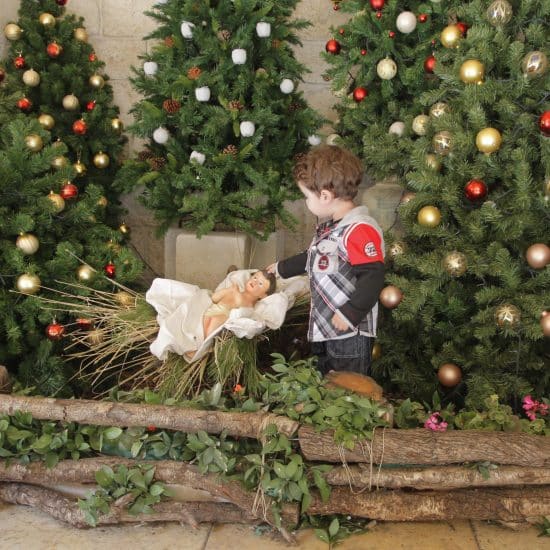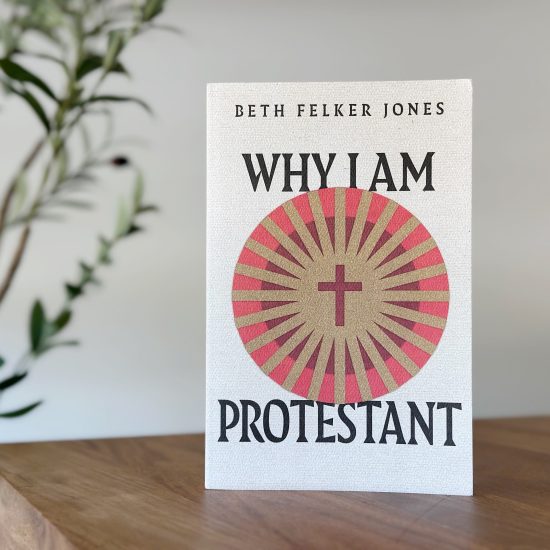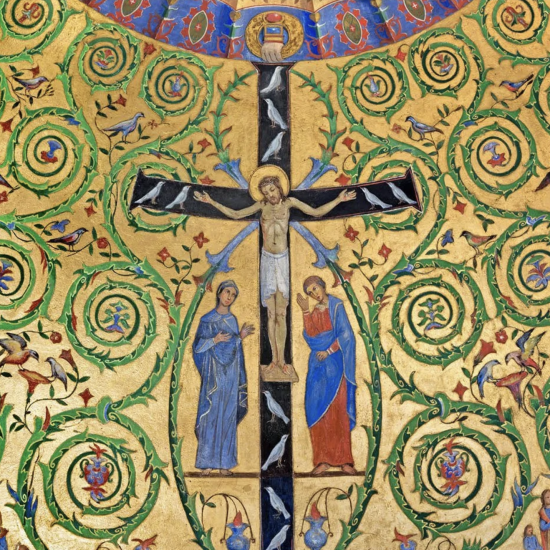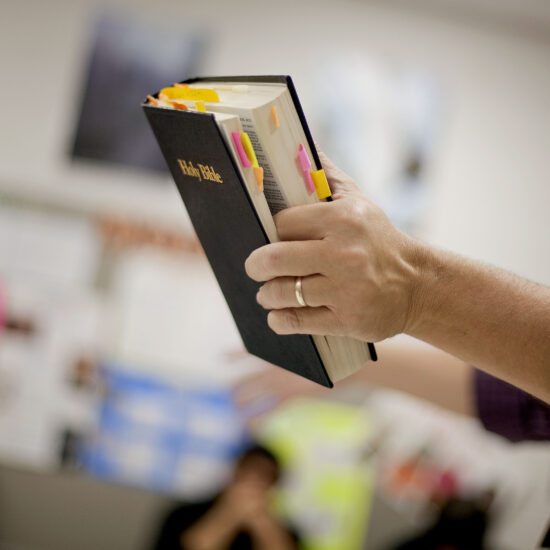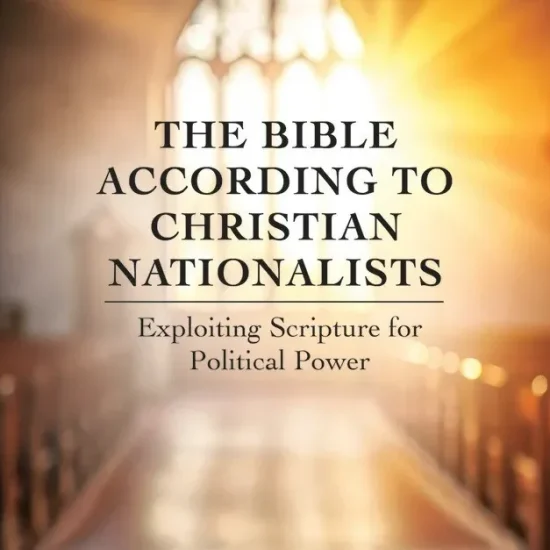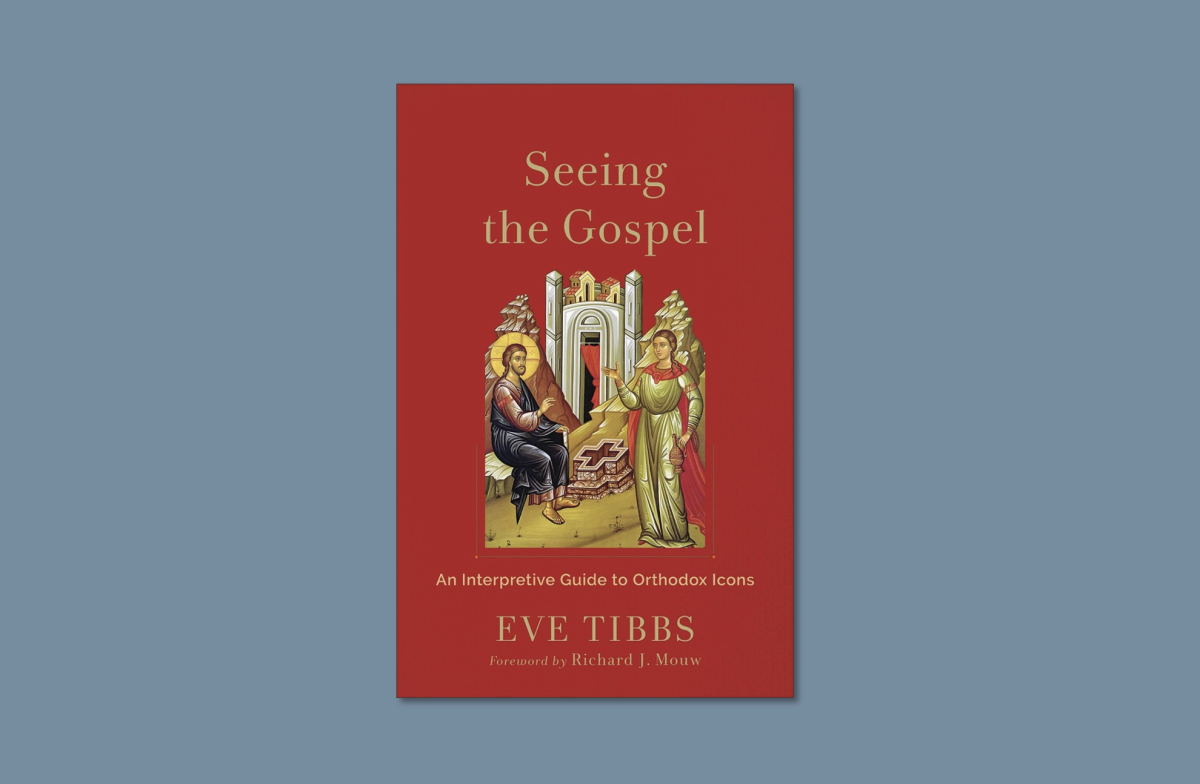
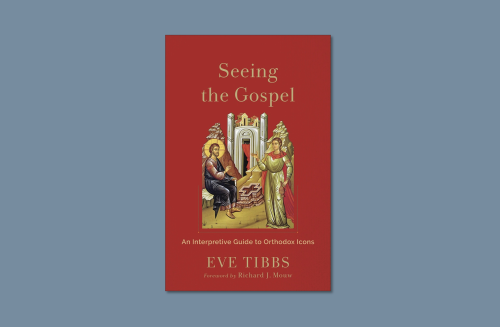
SEEING THE GOSPEL: An Interpretive Guide to Orthodox Icons. By Eve Tibbs. Foreword by Richard J. Mouw. Grand Rapids, MI: Baker Academic, 2025. Xviii + 222 pages.
To many Christians in the West, Eastern Orthodoxy is considered a bit exotic. For many in the Protestant community, at least until recent decades, it wasn’t even on the radar. In large part, this was true because Eastern and Western branches of the Christian community have lived in isolation from each other, especially after the great schism of 1054, when the Pope and Patriarch of Constantinople anathematized each other over several matters, including the date of Easter and the filioque addition to the Western version of the Nicene Creed. Things began to change as early as the 1960s, as a few evangelical Protestants began looking for a home in what they hoped was a church that had deeper roots than Protestantism but wasn’t Roman Catholic. Perhaps it was the exotic nature of the Eastern Church with its liturgy and its icons. Because of this growing interest, more resources have emerged, with Protestants discovering the riches of the East from early Christian theologians such as the Cappadocians, John of Damascus, and Maximus the Confessor, as well as more recent figures such as Vladimir Lossky, Alexander Schmemann, and Sergius Bulgakov (all of whom I have read with great interest). Interestingly, one of the places where evangelicalism and Orthodoxy have met is my alma mater, Fuller Theological Seminary.

Robert D. Cornwall
Whether one is Orthodox or not, the icons that have emerged over time have attracted great attention. There is something mysterious and spiritually moving in many of these icons produced over time. But there is more to these works of art than the artwork itself. In fact, the creators of the icons are said to write them, not paint them. So, is there more to these sacred “pictures” than meets the eye? According to Eve Tibbs, there is much more to them. She offers readers An Interpretive Guide to Orthodox Icons in her book Seeing the Gospel.
The author of this interpretive guide is Eve Tibbs, a Greek Orthodox theologian who holds a Ph.D. from Fuller Seminary and serves as an affiliate professor of theology at Fuller. along with being a member of the Faith and Order Commission of the World Council of Churches and the ministry lead for Christian Education for the Greek Orthodox Metropolis of San Francisco. She’s not the first Orthodox scholar to study or teach at Fuller, so Fuller has long been a meeting place, going back at least to my days at the seminary. This is her second book, which provides a helpful resource to Orthodox and non-Orthodox alike. Her earlier book, which serves as a primer on Orthodox theology that is very accessible to non-Orthodox Christians, a book I reviewed, is titled A Basic Guide to Eastern Orthodox Theology. Whereas the earlier book provides readers with an overview of Orthodox theology, in Seeing the Gospel, she focuses on one particular aspect of the Orthodox experience, the icons that have become an important space where people visually encounter Orthodoxy. The point she wants to make in this book, especially when it comes to her non-Orthodox readers, is that icons are not merely pictures. They carry deep meaning if you know what you’re looking for.
In her Preface, Tibbs invites us to consider the possibility that when we view Orthodox Icons, we encounter “more than meets the eye” (p. xiii). She writes that icons open up the Scriptures in new ways. Thus, “The icon literally offers the difference between seeing something in ‘black and white’ versus ‘living color,’ and yet it offers even more than that—it offers an encounter with the Kingdom of God from within the created world” (p. xiii). In Seeing the Gospel, Tibbs reveals the ways icons define Orthodox spirituality, even if that is not her primary intent in writing this beautifully illustrated book. That is because what Tibbs seeks to do in interpreting the icons is take note of the ways icons reveal elements of the Gospel that words might not effectively convey.
Tibbs divides her book into two parts. After the Introduction, in which Tibbs provides basic information about icons and the role they play in Orthodox life, she moves to a section that provides “A Basic Introduction to Icons.” The two chapters in this section set up what we encounter in Part 2, which focuses on the icons and the message they proclaim when it comes to the Gospel story. While a reader might be tempted to skip Part 1 and jump to the icons and their interpretation, which are found in Part 2, that would be a mistake. That’s because Part 1 offers the interpretive key that makes Part 2 understandable. The first chapter in Part 1 is titled “A Visual Biblical Worldview.” Here, Tibbs writes that icons make the invisible visible, as they reflect the incarnation as defined in John 1. Thus, “The icon, whether painted on a single wood panel with egg tempera paint or as a mural on church walls, visually presents the Gospel in a canonically defined manner” (p. 10). Again, icons are not merely pictures. They have sacred intent. In this chapter, Tibbs helps us understand what goes into an icon, why they are “written” as they are in a relatively unnatural way, and the function they have in Orthodox life, whether didactic, apologetic, or liturgical.
Chapter 2 provides the reader with something of a history lesson by taking note of “The Iconoclast Controversy.” This controversy shook the Eastern churches during the Byzantine era. One of the key questions that emerged from the controversy was whether “matter” matters. In response to those who argued that God was formless and immaterial, and thus impossible to depict, supporters of icons point to Jesus, who made the invisible visible. It should be noted that this debate emerged at the same time Islam was making headway in the region. She concludes her chapter by pointing again to the purpose of the book, which is to remind the reader that God is the first artist and that icons share the same message as the Gospels, only that with icons, we see the Gospel.
The two chapters in Part 1 serve an important purpose in reminding readers what goes into the creation of icons and the role they play in the life of Orthodox Churches. Then, in Part 2, titled “Seeing the Gospel in Icons,” Eve Tibbs takes us on a journey that introduces us to numerous icons, sharing what the “writers” of the icons meant to portray in writing these sacred pictures. She does this by leading us step by step through the Gospel story, beginning with a chapter reminding us that Christ is the Giver of Light (Chapter 3), moving step by step through the forerunners, the annunciation to Mary, the Nativity, the meeting of Jesus in the Temple by Simeon and Anna, Christ’s baptism, his ministry, “Jerusalem before the Cross” (focusing on the raising of Lazarus, Palm Sunday, the Last Supper with the washing of the feet), the Cross, Tomb, Resurrection, and concluding with a chapter on icons that speak visually concerning “After the Resurrection.” Each chapter includes icons ancient and modern, offered in full and amazing color. Each icon pictured in the book reveals part of the Gospel story.
One thing that Tibbs notes in the book is that the icons themselves are interpreted by the Gospels, but one should note the meaning of different aspects of the icons. For example, the color “red” generally represents humanity, while blue represents divinity. Therefore, the icons that depict Jesus will picture him with a red inner cloak and a blue outer cloak, thereby using the two colors to represent his dual nature as human and divine. When it comes to icons featuring Mary, she will often be dressed in red, though with some blue, representing her role in bearing the divine Christ (the theotokos). So, as we encounter each icon, Tibbs points out different aspects of the icon, taking note of how the elements are arranged, such that each element in the icon has a purpose. Thus, icons are not mere pictures.
I believe that Eve Tibbs’ Seeing the Gospel should provide readers, especially non-Orthodox readers, not only with information about icons but also with a resource that might help deepen one’s spiritual journey, as we see the Gospel portrayed visually. Richard Mouw, President Emeritus of Fuller Seminary, writes appreciatively in his Foreword that what Tibbs offers here is an “Orthodox Feast,” not just, as he reports of a statement by Alexander Schmemann, a casserole to an ecumenical potluck (p. ix). Such is the case, for Tibbs has offered us a full picture of the Gospel story in the form of icons, helpfully interpreted so that we can see things that at first glance are simply elements in a picture, but which have deep meaning for those who know how to interpret them. The reader is blessed to encounter these icons that are vividly presented on thick paper designed for photographs and images. She also provides readers with a glossary of terms, which should also prove helpful. While this is a visually stunning book (the people at Baker are to be commended for going to the trouble of producing full-color images), even more importantly, she helps us read the icons in new ways. That is more than an ecumenical potluck; it is a component of a truly ecumenical banquet.
This review originally appeared on BobCornwall.com.
Robert D. Cornwall is an ordained minister in the Christian Church (Disciples of Christ). Now retired from his ministry at Central Woodward Christian Church (Disciples of Christ) of Troy, Michigan, he serves as Minister-at-Large in Troy. He holds a Ph.D. in Historical Theology from Fuller Theological Seminary and is the author of numerous books, including his latest “Eating with Jesus: Reflections on Divine Encounters at the Open Eucharistic Table.” His blog Ponderings on a Faith Journey can be found here.

